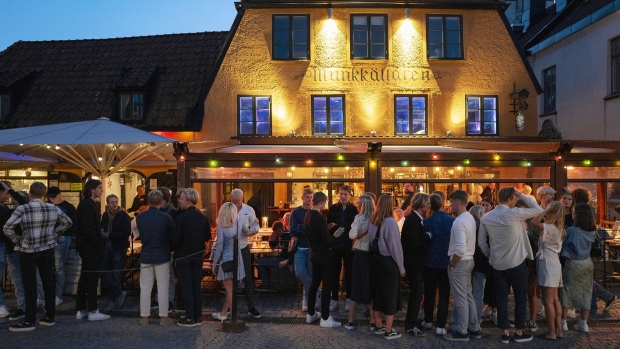Oct 29, 2021
Swedish Commission Indicts Some Early Covid Responses as ‘Tardy’
, Bloomberg News

(Bloomberg) -- Sweden did too little, too late to curb Covid-19 infections when the pandemic broke out last year, a government-appointed commission said on Friday.
The report is an indictment of some controversial aspects of Sweden’s strategy in the early phases of the pandemic. The almost 1,200-page document published Friday says it appears obvious that the initial measures were lacking, both compared with neighboring countries and in relation to the prevalence of infections.
“Sweden’s response to the pandemic has been marked by tardiness,” said the commission, which is due to publish its full assessment next year. “Initial measures were inadequate to halt, or even to significantly reduce, infection rates.”
Read More: Why Sweden Has Tightened Its Light-Touch Covid Rules: QuickTake
Even as death rates surged in early 2020, Sweden kept stores, restaurants and most schools open, in a response that critics labeled a deadly folly or an outright disaster.
The country’s public health agency argued that all aspects of public health should be taken into account, including the adverse impact of restricting people’s movements. A sustainable strategy should rely mainly on people’s willingness to adjust their lives voluntarily to help curb transmission, it said.
As the second wave hit, Sweden changed tack, introducing more significant restrictions such as a ban on alcohol sales after 8 p.m. and capacity limits on stores. As of late October, more than 15,000 people in Sweden have died after Covid-19 infections, or about 145 per 100,000 of its population. That is below the European Union average, but triple Denmark’s death rate and almost 10 times Norway’s.
The report notes that Sweden’s health care system largely managed to cope with the demands of the pandemic, to a large part thanks to the efforts of staff. However, “that adaptation came at the price of extreme stress on employees, as well as other health care being postponed or cancelled.” Hence, the commission concludes that Sweden “will have to live with the consequences of the pandemic for a long time to come.”
©2021 Bloomberg L.P.